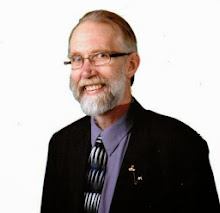All 3 methods have been the focus of many arguments debating their relevance in today’s technical age. When it seems their marketing attempts have returned less than desirable results or seems to have failed, business people tend to blame the media platform first. “I should never have used email, no one opens those, I ruined my whole campaign by focusing on email.”
Or it’s the fault of the greatly derided direct mail platform, where it seems everyone is quick to advise you afterwards that ‘It’s just a waste of time and resources, no one pays attention to print any longer.’ .
But in the end these media platforms are just tools — like hammers, harnesses and remote controls — they work properly only if you can hit the nail, buckle the straps or press the right buttons.
Being in the marketing business my brain is always running, looking at products and see how they could be promoted, sales or conversions. Did you realize humans have an attention span of 8 seconds??? WOW!
The brain processes visuals 60,0000 times faster than the time it takes the brain to decode text. Being able to add graphics, pictures, and visuals to sell yourself with is a must.
Marketing that cuts through the clutter with attention-getting graphics and copy is important to success.
Keep it simple. Due to cognitive fluency, the brain craves ease and order. Direct mail and email that creates a simple decision path with limited copy and explanation always test better. Add that to a simple call to action telemarketing follow up and there you go.
The support is in the legs. Like a stool, your campaign will topple if any of the legs are weak or not there. And before you blame the multi-channel legs of your campaign’s shortcomings, ask first whether you got the right marketing channel, list, and message.
A business owner told me “telemarketing doesn’t work’ but then after I nitched him down and slashed his overly long script that only emphasizes benefits that address the target audience’s primary needs, he went and had a successful calling campaign.
Another very common complaint was voiced by a business owner. She claimed that email does not work. Together we examined & cleaned her email list, determined her primary audience, sent targeted emails and added on a phone call to people who opened up the email 3 or more times. She saw the power of email when it was used properly.
A similar story unfolded with a couple of business owners who had decided that direct mail doesn’t work. We sat down together looked over their mailing list cleaned it up and then look at the content they were sending. The content was tweaked to be more relevant, graphics and a call to action were added. They immediately saw a turn around in the number of clients brought in this way.
Of course, all media channels don’t work for all people and purposes. But what is the right one for you? If you’re B2B like I and my clients are, I go to my stool legs of direct mail, email, and telemarketing. Time and time again this is where the real marketing action is, Everything else, yes everything in that long list only supports rolls to these 3.
But more often than not, you’ll have better luck with your marketing campaigns if you examine your target market and message first. If you don’t get those right, it doesn’t matter what media channel you choose. You’re doomed to failure.
So come with us and sit down on your companies stool and let us keep those legs strong and working
Larson & Associates
847-991-1294
howard@larsonassociates.ws

| 